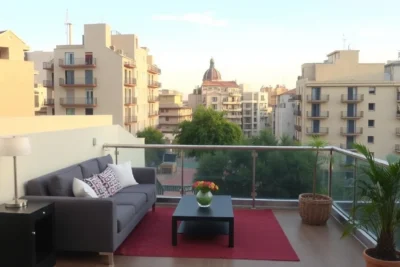
Barcelona, a city renowned for its unique architecture and vibrant culture, boasts one of the most iconic landmarks in the world: the Sagrada Familia. This breathtaking basilica, designed by the visionary architect Antoni Gaudí, captivates visitors with its intricate facades and towering spires.
When planning a trip to this captivating city, it's impossible to overlook the stunning beauty of this architectural masterpiece. **The Sagrada Familia in Barcelona is a must-see! 🏰😍** Its ongoing construction, which has been a labor of love for over a century, only adds to its allure and significance, making it a symbol of Barcelona’s artistic heritage.
The Architectural Marvel of the Sagrada Familia in Barcelona
The Sagrada Familia stands as a testament to the genius of Antoni Gaudí, whose innovative approach redefined architectural norms. This basilica represents a fusion of Gothic and Art Nouveau styles, characterized by its organic forms and vibrant colors that mimic nature. Each element, from the towering spires to the intricate sculptures, tells a story, inviting visitors to explore its rich symbolism.
One of the most remarkable aspects of the Sagrada Familia is its use of light. Gaudí designed the interior to allow sunlight to filter through stained glass windows, creating a mesmerizing effect that shifts throughout the day. This intentional interplay of light and color enhances the spiritual atmosphere, making it not just an architectural marvel but also a profound sensory experience.
Visitors to the Sagrada Familia will marvel at its unique facades, each representing different stages of Christ's life. The Nativity Facade, adorned with elaborate sculptures, celebrates the birth of Jesus, while the Passion Facade conveys the drama of his crucifixion. Together, these façades create a narrative that captivates and educates, ensuring that each visit reveals something new.
As the construction progresses, the Sagrada Familia continues to evolve, with completion expected in the coming years. This ongoing process reflects a commitment to preserving Gaudí's vision while integrating modern technology. The basilica not only stands as a symbol of Barcelona but also as a beacon of architectural innovation, attracting millions of visitors each year who come to witness its grandeur and artistry.
Exploring the History Behind the Sagrada Familia's Construction
The construction of the Sagrada Familia began in 1882, initiated under architect Francisco de Paula del Villar. However, it was Antoni Gaudí who took over the project a year later, dramatically transforming its design and vision. His deep commitment to the basilica's construction would lead him to dedicate over 40 years of his life to this endeavor, shaping it into a unique architectural masterpiece.
Gaudí drew inspiration from nature and his deep religious beliefs, which influenced many aspects of the design. He envisioned the basilica as a natural formation, reflecting the organic structures found in the environment. This is evident in features such as the columns resembling trees, which support the overall structure while creating a sense of awe and connection to the natural world.
The Sagrada Familia's construction faced numerous challenges, including funding issues and the interruption of work during the Spanish Civil War. Despite these setbacks, the project has continued to progress, with advancements in technology allowing modern architects to bring Gaudí's original vision to life. This blend of historic craftsmanship and contemporary methods is key to understanding the basilica's ongoing journey toward completion.
As the Sagrada Familia approaches its anticipated completion date in 2026, it will commemorate the 100th anniversary of Gaudí's death. This milestone not only honors his legacy but also highlights the collaborative effort of countless artisans and architects who have contributed to this monumental project over the years. Visitors today can witness a living history, where each stone laid is a testament to the dedication that has spanned more than a century.
Top Reasons Why the Sagrada Familia Should Be on Your Barcelona Itinerary
One of the top reasons to include the Sagrada Familia in your Barcelona itinerary is its unparalleled architectural beauty. Designed by Antoni Gaudí, this basilica is a masterpiece that combines Gothic and Art Nouveau elements, inviting visitors to admire its intricate details and grandeur. Every corner of the building tells a unique story, showcasing Gaudí's innovative vision and artistic genius.
Moreover, the Sagrada Familia's rich symbolism makes it a fascinating site to explore. Each facade represents different aspects of Christ's life, providing a narrative that is both educational and inspirational. Highlights include:
- Nativity Facade: Celebrating the birth of Jesus with elaborate sculptures.
- Passion Facade: Portraying the dramatic events of Christ's crucifixion.
- Glory Facade: Symbolizing the glory of Jesus and his resurrection, still under construction.
Another compelling reason to visit is the ongoing construction of the Sagrada Familia, which is set to complete in 2026, marking the 100th anniversary of Gaudí's death. This ongoing project reflects a commitment to both preserving Gaudí's vision and integrating modern technologies, making it a living testament to architectural innovation. Witnessing this evolution offers a unique perspective on how art and craftsmanship can transcend time.
Lastly, the interior of the Sagrada Familia is an experience unlike any other. The play of natural light filtering through the stunning stained glass windows creates an ethereal atmosphere, enhancing the spiritual ambiance of the basilica. Visitors often leave feeling inspired and uplifted, having experienced a space that harmoniously blends art, faith, and nature.
A Guide to the Stunning Facades of the Sagrada Familia
The facades of the Sagrada Familia are more than just decorative elements; they are integral to the storytelling of the basilica. Each facade encapsulates significant events from the life of Christ, allowing visitors to engage with the narrative on a deeper level. The unique representations provide insight into Gaudí's artistic vision and religious fervor, making each visit a meaningful experience.
Among the most stunning is the Nativity Facade, which features intricate sculptures celebrating the birth of Jesus. This facade is characterized by its vibrant depictions of flora and fauna, symbolizing the natural world that Gaudí revered. In contrast, the Passion Facade uses stark, angular designs to convey the emotional intensity of Christ's crucifixion, showcasing Gaudí's ability to evoke strong feelings through architecture.
In addition, the Glory Facade, which is still under construction, aims to encapsulate the glory of Jesus and the theme of resurrection. This ongoing work not only reflects the evolving nature of the Sagrada Familia but also highlights the dedication of the artisans who continue to bring Gaudí's vision to life. As visitors explore these facades, they are invited to reflect on profound themes of faith, life, and mortality.
To truly appreciate the facades, consider the following tips for your visit:
- Take a guided tour: Guides can offer insights into the symbolism behind each facade.
- Visit at different times of day: The changing light can dramatically alter the appearance and atmosphere of the facades.
- Engage with the details: Spend time observing the craftsmanship and intricate designs that make each facade unique.
What Makes the Sagrada Familia a UNESCO World Heritage Site?
The Sagrada Familia is recognized as a UNESCO World Heritage Site due to its exceptional architectural and artistic value. This iconic basilica is a prime example of modernist architecture, showcasing the hallmark features of Antoni Gaudí's style. Its integration of natural forms and innovative structural techniques exemplifies a groundbreaking approach that challenges traditional architectural norms.
Another reason for its UNESCO designation is its profound cultural significance. The Sagrada Familia represents the culmination of Gaudí's vision, reflecting the deep religious beliefs and artistic aspirations of late 19th and early 20th-century Spain. The basilica serves not only as a place of worship but also as a symbol of Barcelona's identity, drawing millions of visitors who come to experience its unique narrative and spiritual essence.
The intricate details found throughout the Sagrada Familia, from the vast facades to the whimsical interior, further solidify its status as a World Heritage Site. Each element is meticulously crafted to tell the story of Christianity, with a focus on themes such as creation, redemption, and eternal life. This rich tapestry of symbolism allows visitors to engage deeply with the structure's meaning, making it a dynamic cultural landmark.
Lastly, the ongoing construction of the Sagrada Familia underscores its relevance in contemporary society, representing a bridge between tradition and innovation. The collaboration between artisans and modern architects strives to honor Gaudí's original vision while embracing cutting-edge technologies. This commitment to preservation and evolution ensures that the Sagrada Familia remains a living masterpiece, continually captivating audiences around the world.
Tips for Visiting the Sagrada Familia: What You Need to Know
When visiting the Sagrada Familia, it's essential to book your tickets in advance. This iconic site attracts millions of visitors each year, and securing a timed entry can save you from long waits. Consider purchasing a combination ticket that includes access to other attractions in Barcelona, allowing you to make the most of your time in the city.
Timing your visit can greatly enhance your experience. Aim to arrive early in the morning or later in the afternoon to avoid peak crowds. The early morning light streaming through the stained glass windows offers a breathtaking view of the interior, while the late afternoon provides a magical glow that transforms the space. Remember to check the daily schedule for special events or services that may impact visitor access.
To fully appreciate the intricate details of the Sagrada Familia, consider joining a guided tour. Knowledgeable guides can provide valuable insights into the history and symbolism of the basilica, enriching your visit. Additionally, be sure to wear comfortable shoes, as you will want to explore every corner of this architectural masterpiece, from its stunning facades to the awe-inspiring interior.
Lastly, don't forget to take a moment to step back and admire the Sagrada Familia from different vantage points outside. The surrounding park offers various perspectives, allowing you to capture stunning photographs of this UNESCO World Heritage Site. By taking these steps, you’ll ensure that your visit to the Sagrada Familia is both memorable and fulfilling.
En este sentido, te invitamos a ver el siguiente video que explora por qué la Sagrada Familia en Barcelona es una visita imprescindible.
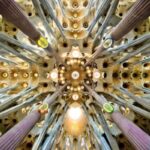 Unique Organic Architecture at the Basilica
Unique Organic Architecture at the Basilica Where to Stay in Barcelona
Where to Stay in BarcelonaIf you want to know other articles similar to The Sagrada Familia in Barcelona is a must-see! 🏰😍 you can visit the category WHERE YOU CAN RENT.
Leave a Reply

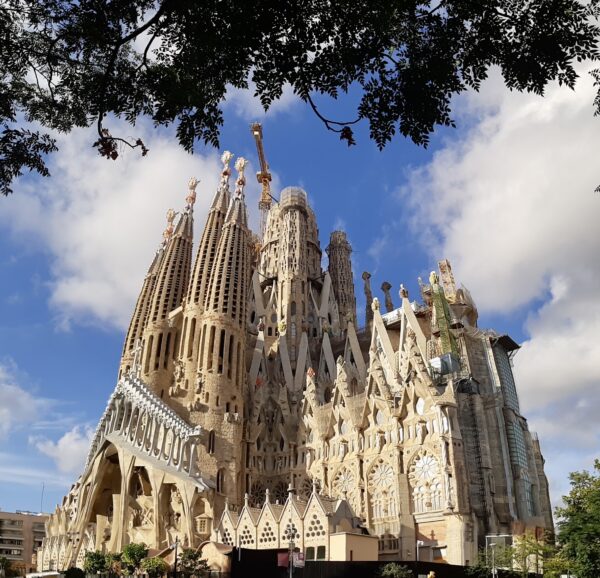
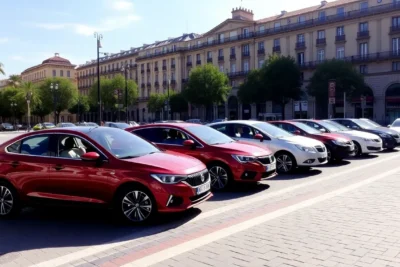
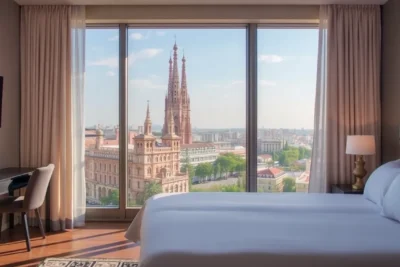
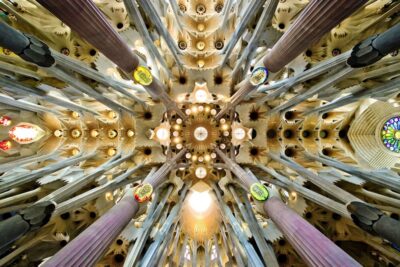
Read more!